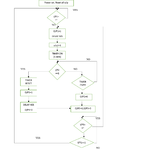Sonu21091990
Newbie level 6
i am new to pic microcontroller programming. i have pic12f629 and i am using mplab xc8 compiler. when i insert the hex file into microcontroller it became faulty. previously i configured my configuration bits as MCLRE while i am using it as i/o port. Any other fault?
my header file
https://drive.google.com/file/d/0B7rlUXKVOcwCaXZrcFQwb284d0k/view?usp=sharing
my main file
https://drive.google.com/file/d/0B7rlUXKVOcwCZ2tRUlRQdWxvOTA/view?usp=sharing
thanks in advance
my header file
https://drive.google.com/file/d/0B7rlUXKVOcwCaXZrcFQwb284d0k/view?usp=sharing
my main file
https://drive.google.com/file/d/0B7rlUXKVOcwCZ2tRUlRQdWxvOTA/view?usp=sharing
thanks in advance
